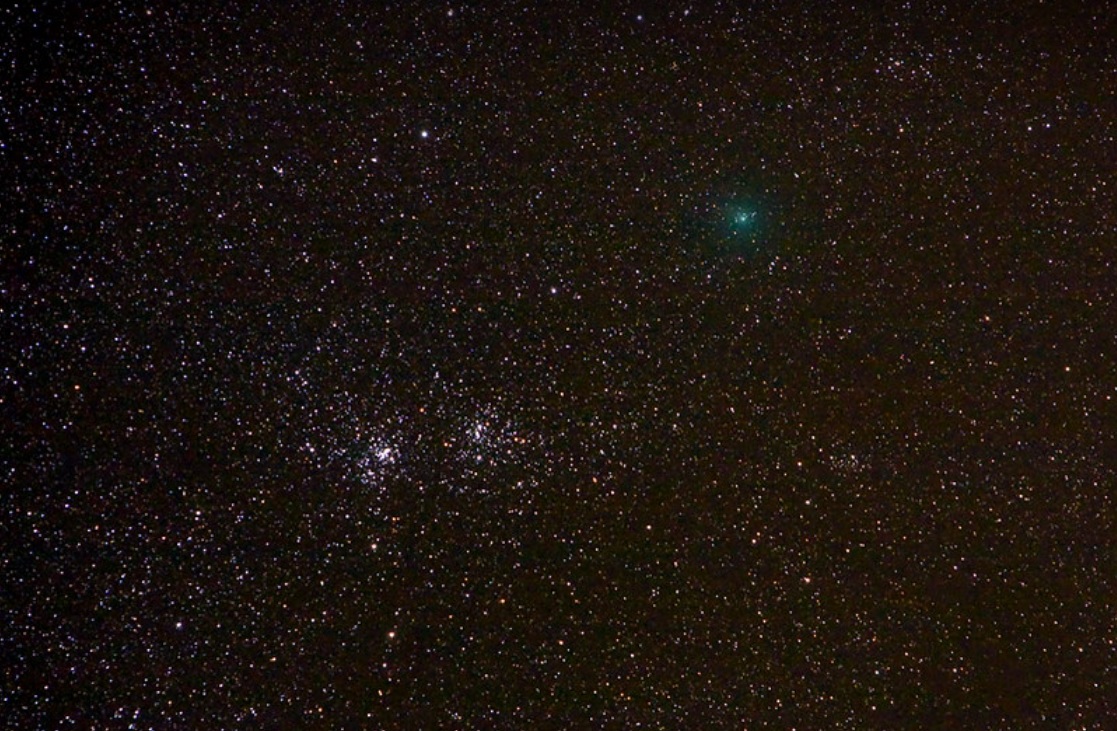Catch periodic cosmic interloper 103P Hartley while you can.
Periodic comets are like old friends, back for a visit. We have a get together with just such a denizen of the cometary league, as Comet 103P Hartley makes a favorable apparition in late 2023.
Comet 103P Hartley: An Origin Story
The Jupiter-family comet was discovered by astronomer Malcolm Hartley on the night of March 15th, 1986, observing from the Siding Spring Observatory in Australia. Comet 103P Hartley is also sometimes referred to Comet Hartley 2.
The comet reaches perihelion just beyond Earth’s orbit, at 1.05 Astronomical Units (AU) from the Sun. The next perihelion passage for the comet occurs next month on October 12th, 2023. The comet reaches an aphelion of 5.9 AU, just out beyond the orbit of Jupiter in its 6.5 year orbit. We get a favorable appearance of the comet on every second perihelion pass, or once every 13 years.

The comet made its closest pass to the Earth for the 21st century on October 20th 2010, just 8 days prior to perihelion at 0.12 AU (11 million miles or 18 million kilometers) distant, or about 44 times the distance from the Earth to the Moon.
As is the case with many inner solar system short period comets, the comet’s orbit was captured and shaped by massive Jupiter.
On the 2010 passage, the comet flirted with naked eye visibility at +5th magnitude. This apparition isn’t quite as good, as the comet passes 35.5 million miles or 57 million kilometers from the Earth on September 26th, just over two weeks prior to reaching perihelion. Still, it should top out as a respectable binocular object at +8th magnitude in 2023.

See Comet 103P Hartley in September
The September apparition sees the comet traveling from the constellation of Perseus the Hero into Auriga the Charioteer. This places the comet well in the late evening sky for northern hemisphere observers. Some photogenic dates with destiny include a 0.5 a degree (the diameter of a Full Moon) pass near the +7th magnitude open star cluster NGC 1857 on September 20th, and close passes near the familiar open star clusters Messier 38 and Messier 37 during the week of September 21st through the 26th.

The comet crosses the star rich galactic plane southward on September 12th. The comet should be a fine binocular object around this time, shining at magnitude +10.
The Moon reaches New phase this month on September 15th, representing the span of a week or so, that is ideal for tracking down the comet.
This is the best apparition of the comet since 2010. We won’t have another favorable appearance until 13 years from now, in 2036. The passage will, however, see the comet passing Earth at a much farther 0.8 AU distant.

NASA’s EPOXI mission flew by Comet 103P Hartley in 2010 and revealed a strange, two axis 18.3 hour rotation and a two-lobed ‘dog bone’ shape characteristic of many comets seen up close. This rotation seems to be slowing down due to mass loss, and may actually stop and reverse direction mid-21st century. After that, 103P many speed up fast enough to fly apart late next century.
Comet 103P also seems to be active with lots of outbursts, including hyper-activity from the comet witnessed close-up during the EPOXI flyby.
Be sure to catch sight of Comet 103P Hartley as it graces September skies, for its best appearance for this decade.

